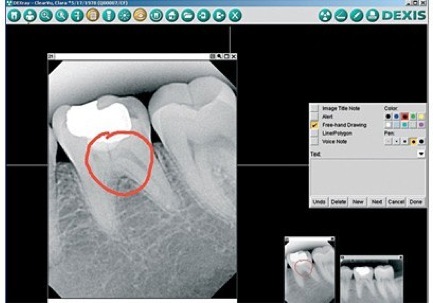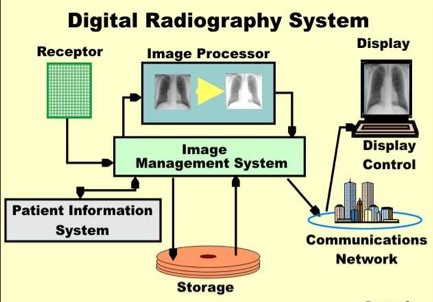digital radiography










Increasingly, health care providers are using digital radiographs. Digital images increase overall efficiency of health care systems by saving storage space, increasing ease of retrieval, and facilitating transmission to experts or other health care providers. Digital radiographs can also be enhanced and manipulated using digital processing software, allowing doctors to learn more from individual x-rays. Also, chemicals needed to process film radiographs are no longer needed eliminating the cost of developing images and the hazards of working with developing chemicals.
advantages of digital radiographs


http://www.dexis.com/UserFiles/Image/sec_multimedia/XrayDeta
il.jpg
Software associated with digital radiography often corrects for minor deficiencies in radiographic technique such as overexposure or improper focus. As a result, radiology technicians and patients may be exposed to more x-rays than are necessary for the required radiograph. Long term, this could result in health complications for patients and health care professionals.
disadvantages of digital radiographs
